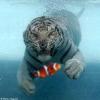Mega Powerful Nitrate and Phosphate Remover - DIY!
-
Topics
-
Latest Update
-
6
Decommissioning Sales of 5f Reef Tank
Pmed u Sent from my SM-S906E using Tapatalk -
-
4
-
4
Wtt multi rbta on huge rock
Goin with one pair of big clownfish for free .... total 5 rbta +free pair of big clownfish $10 collect today before 2pm -
0
Selling brown scopes tang (zebrasoma)
Selling 4" brown tang for $30. Location near kembangan mrt. Please PM me for more info or video. Reason for sale: Adopted my friend's brown tang 3 months ago. It's very healthy. It eats frozen mysis, pellets and even nori (seaweed) from my hand. However, it is bullying my original sailfin tang. Even more day by day as it is getting more comfortable and becoming the alpha of the tank. So I have to let it go.
-







Recommended Posts
Join the conversation
You can post now and register later. If you have an account, sign in now to post with your account.